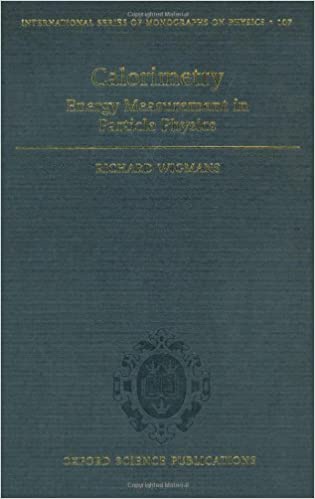by Richard Wigmans, Oxford University Press, ISBN 019 850296 6, 726pp, £85.
The role of calorimetry in high-energy physics has become increasingly important during the last 20 years. This is due to the increase in energy of the particle beams available at the major accelerators and to the need for hermetic detectors. The 1980s, in particular the second half of the decade, saw an important breakthrough in the understanding of the mechanisms underlying the development of hadronic cascades and their energy loss.
The theme around which this breakthrough took place is “compensation”: for a compensating calorimeter e/h = 1, where e represents the response to an electromagnetic and h the response to a non-electromagnetic,that is purely hadronic, shower of the same energy. For compensating calorimeters the energy measurement of electrons and hadrons of the same energy yields the same average response for all energies, at the same time leading to optimal hadronic energy resolution. It is also a prerequisite for linearity of the hadronic energy measurement.
In practice, very few compensating calorimeters have been built for major experiments (one example is the calorimeter of the ZEUS experiment at HERA, discussed in the book), probably because, in practice, achieving compensation means making a concession to the electromagnetic energy resolution. None of the experiments planned at the Large Hadron Collider, for example, will employ a compensating calorimeter. The importance of the research into compensation is nevertheless very large in that it led to a much better understanding of calorimetry in general. The author of the book has made original and essential contributions to this field through his own research.
The book reflects the deep and encyclopedic knowledge that the author has of the subject. This makes the book a rich source of information that will be useful for those designing calorimeters and for those analysing calorimeter data, for a long time to come. At the same time the book is not always successful in finding a way of organizing and conveying all of this knowledge in a clearly structured and efficient way. Parts of the book are rather narrative and long-winded.
The most important chapters are those on Shower Development, Energy Response, Fluctuations and Calibration. Also, that on Instrumental Aspects contains essential information. The chapters on generic studies and on existing (or meanwhile dismantled) and planned calorimeter systems, are interesting but less necessary parts of a textbook. Moreover, the author does not always keep to the subject – calorimetry – leading to unnecessary excursions and, what is worse, outdated material. It would, on the other hand, be interesting if the author, in his description of the calorimeters under construction for the Atlas experiment, had been a bit more explicit on what, in the light of the ideas developed earlier in the book, the optimal approach would be to (inter)calibrating this very complex calorimeter system.The chapter on Calibration is probably the most essential part of the book, bringing together many of the fundamental issues on shower development, signal generation and detection. Reading this chapter, one gets the impression that in fact it is impossible to calibrate calorimeters, but the style chosen by the author is only to emphasize that the issue is subtle and great care must be taken. The chapter contains information that is extremely worthy of consideration, culminating in the recommendation that, in the case of non-compensating calorimeters, individual (longitudinal) calorimeter sections should be calibrated by the same particles generating fully contained showers in each section, a recommendation that, in practice, cannot always be satisfied. In his ardour to emphasize the importance of the (inter)calibration of longitudinal calorimeter segments, the author even invokes decays, such as that of the neutral rho into two neutral pions, that do not exist in nature – we get the point and forgive him. It is, however, true that there are more places where the book would have profited from a critical, final edit.
Calorimetry is a book that describes the essential physics of calorimetry. It also contains a wealth of information and practical advice. It is written by a leading expert in the field. The fact that the discussions sometimes do not follow the shortest path to the conclusion and that perhaps the “textbook part” of this work should have been accommodated in a separate volume does not make the book less important: it will be amply used by those trying to familiarize themselves with calorimetry and in particular by those analysing the data of the very complex calorimeter systems of future experiments, such as at LHC.






